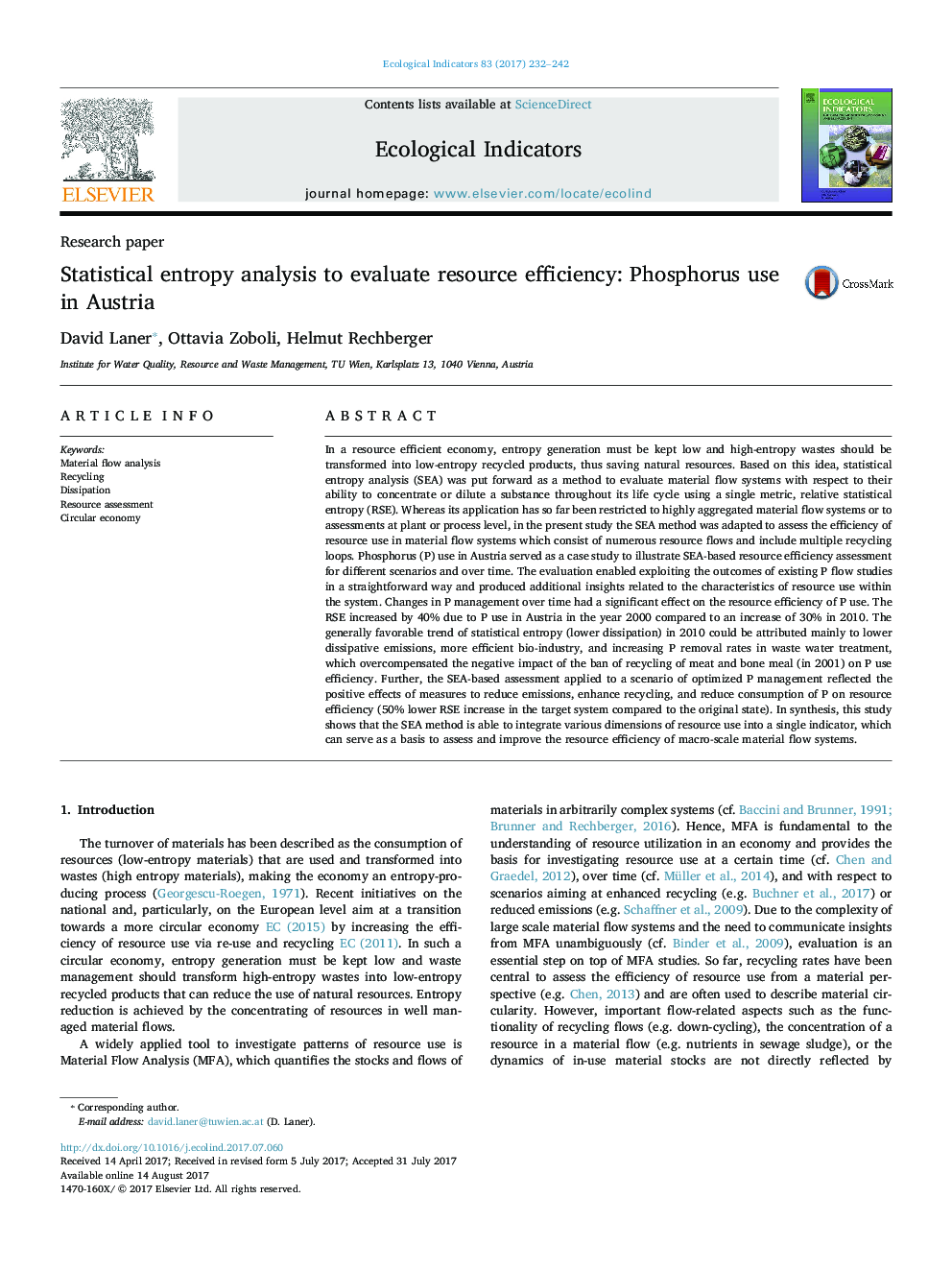| Article ID | Journal | Published Year | Pages | File Type |
|---|---|---|---|---|
| 5741494 | Ecological Indicators | 2017 | 11 Pages |
â¢Statistical entropy analysis (SEA) to assess resource efficiency of complex systems.â¢Phosphorus (P) use in Austria over time and in optimized scenarios was evaluated.â¢Results showed significant differences between different states of P use.â¢SEA could integrate various dimensions of resource use into a single indicator.â¢Statistical entropy as a basis to optimize the efficiency of resource systems.
In a resource efficient economy, entropy generation must be kept low and high-entropy wastes should be transformed into low-entropy recycled products, thus saving natural resources. Based on this idea, statistical entropy analysis (SEA) was put forward as a method to evaluate material flow systems with respect to their ability to concentrate or dilute a substance throughout its life cycle using a single metric, relative statistical entropy (RSE). Whereas its application has so far been restricted to highly aggregated material flow systems or to assessments at plant or process level, in the present study the SEA method was adapted to assess the efficiency of resource use in material flow systems which consist of numerous resource flows and include multiple recycling loops. Phosphorus (P) use in Austria served as a case study to illustrate SEA-based resource efficiency assessment for different scenarios and over time. The evaluation enabled exploiting the outcomes of existing P flow studies in a straightforward way and produced additional insights related to the characteristics of resource use within the system. Changes in P management over time had a significant effect on the resource efficiency of P use. The RSE increased by 40% due to P use in Austria in the year 2000 compared to an increase of 30% in 2010. The generally favorable trend of statistical entropy (lower dissipation) in 2010 could be attributed mainly to lower dissipative emissions, more efficient bio-industry, and increasing P removal rates in waste water treatment, which overcompensated the negative impact of the ban of recycling of meat and bone meal (in 2001) on P use efficiency. Further, the SEA-based assessment applied to a scenario of optimized P management reflected the positive effects of measures to reduce emissions, enhance recycling, and reduce consumption of P on resource efficiency (50% lower RSE increase in the target system compared to the original state). In synthesis, this study shows that the SEA method is able to integrate various dimensions of resource use into a single indicator, which can serve as a basis to assess and improve the resource efficiency of macro-scale material flow systems.
Graphical abstractDownload high-res image (145KB)Download full-size image
